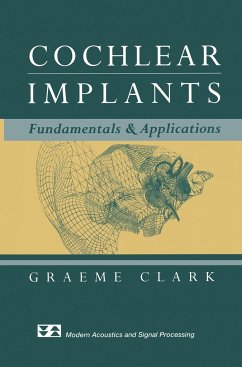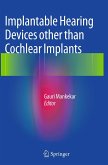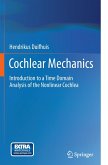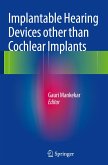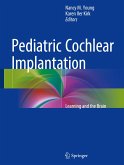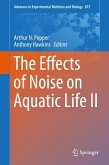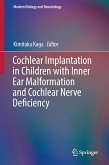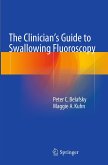Soun is nought but air y-broke -Geoffrey Chaucer end of the 14th century Traditionally, acoustics has formed one of the fundamental branches of physics. In the twentieth century, the ?eld has broadened considerably and become - creasingly interdisciplinary. At the present time, specialists in modern acoustics can be encountered not only in physics departments, but also in electrical and mechanical engineering departments, as well as in mathematics, oceanography, and even psychology departments. They work in areas spanning from musical instruments to architecture to problems related to speech perception. Today, six hundred years after Chaucer made his brilliant remark, we recognize that sound and acoustics is a discipline extremely broad in scope, literally covering waves and vibrations in all media at all frequencies and at all intensities. This series of scienti?c literature, entitled Modern Acoustics and Signal P- cessing (MASP), covers all areas of today's acoustics as an interdisciplinary?eld. It offers scienti?c monographs, graduate-level textbooks, and reference materials in such areas as architectural acoustics, structural sound and vibration, musical acoustics, noise, bioacoustics, physiological and psychological acoustics,speech, ocean acoustics, underwater sound, and acoustical signal processing.
From the reviews:
PHYSICS TODAY (NOVEMBER 2004)
Review by Claus-Peter Richter, Feinberg School of Medicine, Northwestern University, Chicago
"... Graeme Clark, author of Cochlear Implants: Fundamentals and Applications, was one of those early pioneers who was not discouraged by the establishment's criticisms or by initial failures. His lifetime of work has had enormous impact on the development and design of cochlear prostheses. Thus, Clark is well positioned to tell a wonderful success story that begins with some rudimentary hearing sensations evoked by electrical stimulation and ends with accounts of excellent speech perception by many cochlear-implant users. In his 830-page book, Clark describes in great detail the development of cochlear prostheses and covers all aspects of cochlear implantation. The first chapter provides a good historical summary. It begins with a vivid description of Alessandro Volta's 1799 current-injection experiment and follows with the competitive efforts that have led to commercial implants that are able to restore usable hearing to individuals who are severely to profoundly hearing impaired. Readers will certainly notice that the research contributions by Clark's group in Melbourne, Australia, are highlighted in the chapter titled "A History." In the remaining chapters, Clark provides a basis for understanding the challenges researchers face regarding the coding and transmission of acoustic information to the auditory nerve using electrical stimulation. These chapters address subjects including neurobiology, electrophysiology, psychophysics, speech and sound processing, engineering, surgical anatomy, and surgical pathology. The author describes in detail cochlear-implant surgery and the impact of the devices on patients' lives after implantation. The book concludes with his vision about important remaining questions and ideas for future research. ... Cochlear Implants: Fundamentals and Applications, a vivid recollection by one of the pioneers in cochlear implantation, gives insight into the struggles of implementing new technologies to help hearing-impaired individuals. It also colorfully documents how the development of new technologies affects a field and its success."
"This book, of about 800 pages, was written by the initiator and leader of the Australian cochlear implant. ... presents basic knowledge in many fields involved in cochlear implants followed by exposition of applications to cochlear implants. ... Very conveniently, each chapter can be read independently and thus the book is rendered quite attractive to a large readership. ... this book appears as an attractive introduction to studies on cochlear implants by providing a particularly clear and wide overview of its many foundations." (Yves Cazals, Acta Acustica united with Acustica, Vol. 90 (4), 2004)
PHYSICS TODAY (NOVEMBER 2004)
Review by Claus-Peter Richter, Feinberg School of Medicine, Northwestern University, Chicago
"... Graeme Clark, author of Cochlear Implants: Fundamentals and Applications, was one of those early pioneers who was not discouraged by the establishment's criticisms or by initial failures. His lifetime of work has had enormous impact on the development and design of cochlear prostheses. Thus, Clark is well positioned to tell a wonderful success story that begins with some rudimentary hearing sensations evoked by electrical stimulation and ends with accounts of excellent speech perception by many cochlear-implant users. In his 830-page book, Clark describes in great detail the development of cochlear prostheses and covers all aspects of cochlear implantation. The first chapter provides a good historical summary. It begins with a vivid description of Alessandro Volta's 1799 current-injection experiment and follows with the competitive efforts that have led to commercial implants that are able to restore usable hearing to individuals who are severely to profoundly hearing impaired. Readers will certainly notice that the research contributions by Clark's group in Melbourne, Australia, are highlighted in the chapter titled "A History." In the remaining chapters, Clark provides a basis for understanding the challenges researchers face regarding the coding and transmission of acoustic information to the auditory nerve using electrical stimulation. These chapters address subjects including neurobiology, electrophysiology, psychophysics, speech and sound processing, engineering, surgical anatomy, and surgical pathology. The author describes in detail cochlear-implant surgery and the impact of the devices on patients' lives after implantation. The book concludes with his vision about important remaining questions and ideas for future research. ... Cochlear Implants: Fundamentals and Applications, a vivid recollection by one of the pioneers in cochlear implantation, gives insight into the struggles of implementing new technologies to help hearing-impaired individuals. It also colorfully documents how the development of new technologies affects a field and its success."
"This book, of about 800 pages, was written by the initiator and leader of the Australian cochlear implant. ... presents basic knowledge in many fields involved in cochlear implants followed by exposition of applications to cochlear implants. ... Very conveniently, each chapter can be read independently and thus the book is rendered quite attractive to a large readership. ... this book appears as an attractive introduction to studies on cochlear implants by providing a particularly clear and wide overview of its many foundations." (Yves Cazals, Acta Acustica united with Acustica, Vol. 90 (4), 2004)

